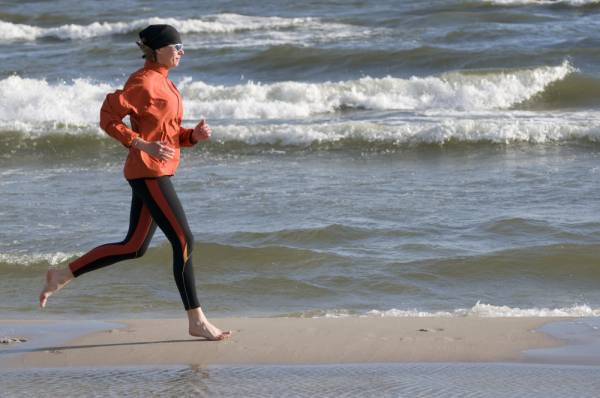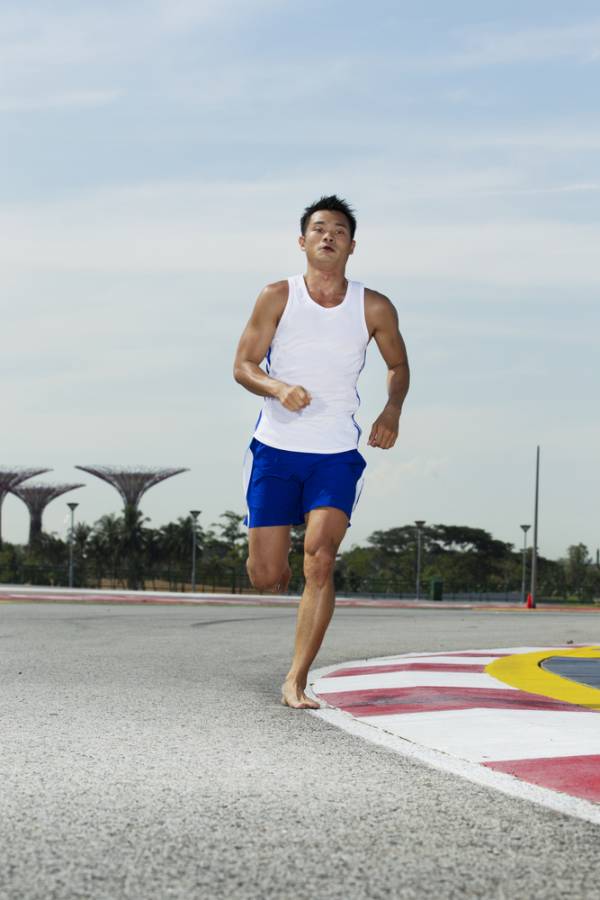So you’ve read Born to Run and now you’re ready to become an urban Tarahumara and run barefoot effortlessly along the trails, injury free and as nature intended.
Or maybe you’ll just hurt yourself. Every year as many as eighty percent of runners suffer an injury that will keep them off the streets for a month.
So you’ve read Born to Run and now you’re ready to become an urban Tarahumara and run barefoot effortlessly along the trails, injury free and as nature intended.
Or maybe you’ll just hurt yourself. Every year as many as eighty percent of runners suffer an injury that will keep them off the streets for a month.
We’ve been running for hundreds of thousands of years to chase prey or to outrun predators, yet our modern life has almost completely ruined any inbuilt sense of how to run without hurting ourselves. So the question is, how can we get back in touch with ourselves while staving off injuries, because the more minimal your shoes, the greater the risk of injury.
Rule 1 – If you can’t do it slow you won’t do it fast
I wrote previously about the need to make sure your feet and ankles work properly. If you follow the joint-by-joint approach to movement then you know the body is built on a flow of stability and mobility.
The foot needs to be strong and stable to withstand the forces of landing during running. However, the ankle needs to be mobile, as it needs to be able to adjust itself to the landing position, relying on the strength of the foot to absorb the force rather than deal with it within the ankle joint. If all that happens properly then the knee is free to hinge back and forth, sweeping the leg under the body.

If, however, you walk with your feet turned out because your foot has collapsed (lacking stability) then your ankle is forced to stiffen itself to act as your foot. Because the ankle is now the stable joint the knee is forced to become unstable and work in directions it’s not designed to and all of a sudden “running hurts your knees.”
So we need a way to build strength and stability in the foot before we have any hope of running effectively. Remember, if you can’t do it slow (move with good form), then you won’t do it fast.
Rule 2 – Introduce barefoot/minimal shoe training gradually
Like with most things people go from one extreme to the other without realizing they need to be in the middle. No one ever said we should do all of our running barefoot. Even the barefoot evangelists will have to admit that as much as the Kenyans may have learned to run barefoot they still compete in shoes!
Barefoot running really came into prominence when top coaches and therapists started to see that small amounts of running on soft or uneven surfaces, like grass, had a great effect on injury proofing or rehabilitating their runners. But they never did all their training on grass or barefoot.
A simple progression for those who are 100% clad in shoes goes like this: 1
- Barefoot walking indoors
- Barefoot walking outdoors
- Barefoot running indoors
- Barefoot running outdoors – progressing from soft to harder surfaces
Because foot placement can be incredibly different for most people when it comes to barefoot running versus running with shoes, care needs to be taken to slowly build the body’s natural shock mechanisms.
Some of the things that need to be addressed are:
- Foot placement – far more forefoot/mid-foot than is common in normal running shoes.
- This leads to increased cadence/turnover as the stride needs to be shortened.

To further deal with this you also need to address the lower limbs and how effective they are as shock absorbers. You may need to spend some time on stretching, but you’ll certainly need to spend time on low-level plyometrics to build the strength you need.
This can take the form of hopping, jumping, and bounding, but the purpose is not to see how high you can jump from or how far you can go, but merely to give the calves and feet some experience dealing with this new stress that it will have to deal with. (Here is one of my favorite running technique and drill videos, for reference.)
Our gradual introduction of barefoot/minimal running should follow a similar approach – keep it gradual.
Normally you wouldn’t add more than ten percent weekly to your running volume yet I hear people all the time lace up their new Frees (or Vibrams or Innov8s) and go for their normal run and wonder why they’re crippled. Keeping our ten percent rule, you should look to do ten percent of your running in your new shoes each week. For example:
- Week 1-4: Lower extremity exercises 2-3 times per week, walk 30 minutes barefoot.
- Week 5-6: Barefoot run 1km 2-3 times per week on a soft surface, suggested as a warm up or cool down from your more serious running.
- Week 7-8: Increase barefoot running by 10% weekly 2-3 times per week on a soft surface.
In your ongoing training, continue slowly adding barefoot volume until you are able to do fifty percent of your normal run distance barefoot. The best results I have had at that point are to switch to a walk/run strategy. For example, if you would normally run for an hour and have built up to thirty minutes of barefoot work, now run for five minutes and then walk for five, continuing to alternate until you’ve hit your target. These walk breaks allow you to freshen up your form and rest the lower limbs so they will continue doing their job for you in preventing injury.
From there simply add run time each week
- Run 6/ Walk 4
- Run 7/ Walk 3
- Run 8/ Walk 2
- Run 10/ Walk 5
- Run 12/ Walk 3
- Run 15/ Walk 5
- Run 18/ Walk 2
By now you’re ready to go totally Tarzan and be barefoot for all your running. I realize this approach is slow and methodical, but it will also keep plantar fasciitis at bay and make sure your body really is strong enough to handle this caveman simple, yet most injury prone of exercises safely and enjoyably.






